Maximilian Bauhofer
Bistatic Information Fusion for Positioning and Tracking in Integrated Sensing and Communication
Oct 15, 2024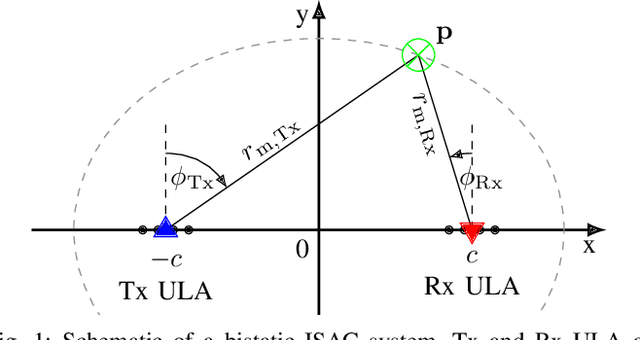
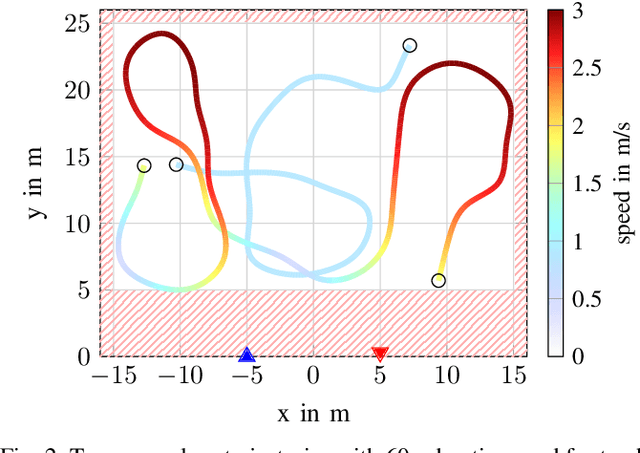
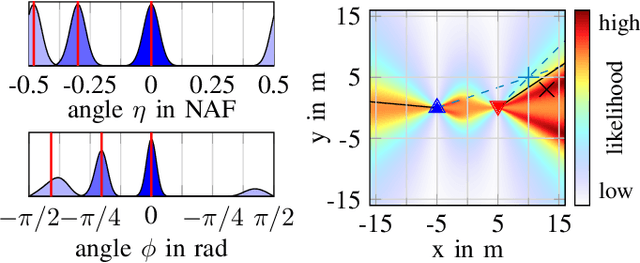
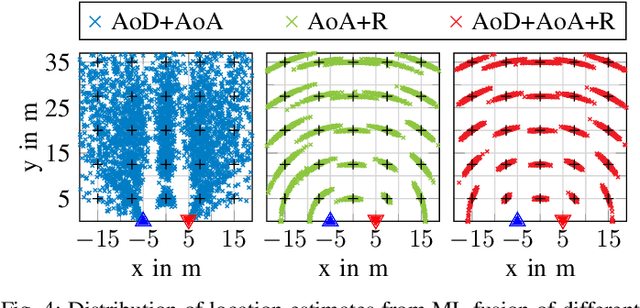
Abstract:The distributed nature of cellular networks is one of the main enablers for integrated sensing and communication (ISAC). For target positioning and tracking, making use of bistatic measurements is non-trivial due to their non-linear relationship with Cartesian coordinates. Most of the literature proposes geometric-based methods to determine the target's location by solving a well-defined set of equations stemming from the available measurements. The error covariance to be used for Bayesian tracking is then derived from local Taylor expansions. In our work we adaptively fuse any subset of bistatic measurements using a maximum likelihood (ML) framework, allowing to incorporate every possible combination of available measurements, i.e., transmitter angle, receiver angle and bistatic range. Moreover, our ML approach is intrinsically flexible, as it can be extended to fuse an arbitrary number of measurements by multistatic setups. Finally, we propose both a fixed and dynamic way to compute the covariance matrix for the position error to be fed to Bayesian tracking techniques, like a Kalman filter. Numerical evaluations with realistic cellular communications parameters at mmWave frequencies show that our proposal outperforms the considered baselines, achieving a location and velocity root mean square error of 0.25 m and 0.83 m/s, respectively.
Multi-Target Localization in Multi-Static Integrated Sensing and Communication Deployments
Jun 13, 2023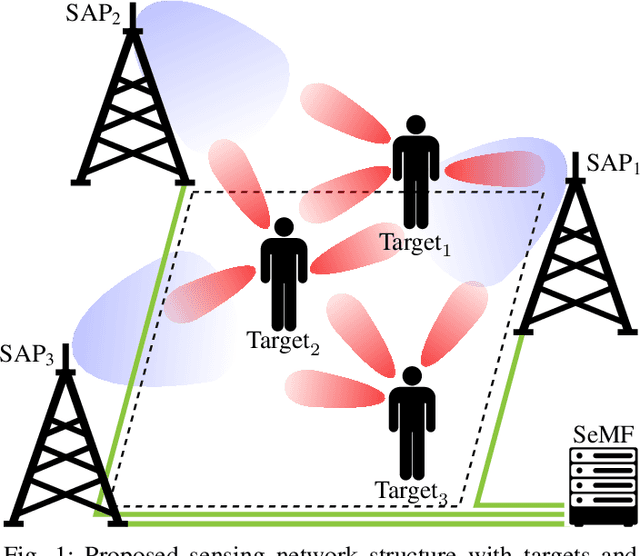
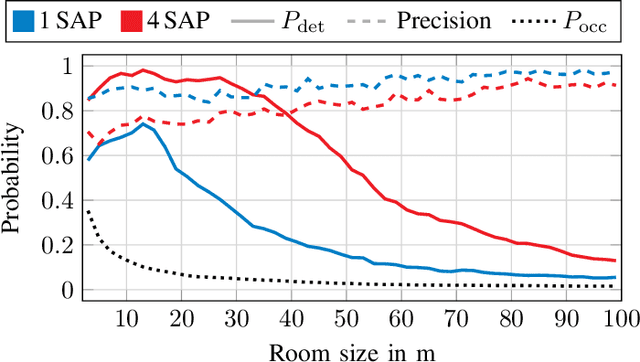


Abstract:In future wireless communication networks, existing active localization will gradually evolve into more sophisticated (passive) sensing functionalities. One main enabler for this process is the merging of information collected from the network's nodes, sensing the environment in a multi-static deployment. The current literature considers single sensing node systems and/or single target scenarios, mainly focusing on specific issues pertaining to hardware impairments or algorithmic challenges. In contrast, in this work we propose an ensemble of techniques for processing the information gathered from multiple sensing nodes, jointly observing an environment with multiple targets. A scattering model is used within a flexibly configurable framework to highlight the challenges and issues with algorithms used in this distributed sensing task. We validate our approach by supporting it with detailed link budget evaluations, considering practical millimeter-wave systems' capabilities. Our numerical evaluations are performed in an indoor scenario, sweeping a variety of parameter to analyze the KPIs sensitivity with respect to each of them. The proposed algorithms to fuse information by multiple nodes show significant gains in terms of targets' localization performance, with up to 35\% for the probability of detection, compared to the baseline with a mono-static setup.
Survey on Integrated Sensing and Communication Performance Modeling and Use Cases Feasibility
May 15, 2023Abstract:As the research community starts to address the* key features of 6G cellular standards, one of the agreed bridge topics to be studied already in 5G advanced releases is Integrated Sensing and Communication (ISAC). The first efforts of the research community are focusing on ISAC enablers, fundamental limits, and first demonstrators, that show that the time has come for the deployment of sensing functionalities in cellular standards. This survey paper takes a needed step towards ISAC deployment, providing an analytical toolkit to model cellular systems' sensing performance, accounting for both their fundamental and practical constraints. We then elaborate on the likely features of 6G systems to provide the feasible sensing key performance indicators (KPIs) in the frequency ranges spanned by cellular networks, including the potential new bands available in 6G, the Frequency Range 3 (FR3). We further validate our framework by visually investigating ISAC constraints with simulation examples. Finally, we assess the feasibility of few selected scenarios that can be enabled by ISAC, highlighting in each of them the limiting factor and, thus, which gaps should be filled by the research and standardization communities in the next years.
Learning to exploit z-Spatial Diversity for Coherent Nonlinear Optical Fiber Communication
Apr 12, 2023



Abstract:Higher-order solitons inherently possess a spatial periodicity along the propagation axis. The pulse expands and compresses in both, frequency and time domain. This property is exploited for a bandwidth-limited receiver by sampling the optical signal at two different distances. Numerical simulations show that when pure solions are transmitted and the second (i.e., further propagated) signal is also processed, a significant gain in terms of required receiver bandwidth is obtained. Since all pulses propagating in a nonlinear optical fiber exhibit solitonic behavior given sufficient input power and propagation distance, the above concept can also be applied to spectrally efficient Nyquist pulse shaping and higher symbol rates. Transmitter and receiver are trainable structures as part of an autoencoder, aiming to learn a suitable predistortion and post-equalization using both signals to increase the spectral efficiency.
 Add to Chrome
Add to Chrome Add to Firefox
Add to Firefox Add to Edge
Add to Edge